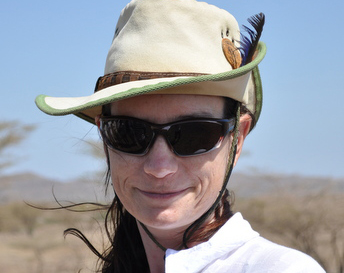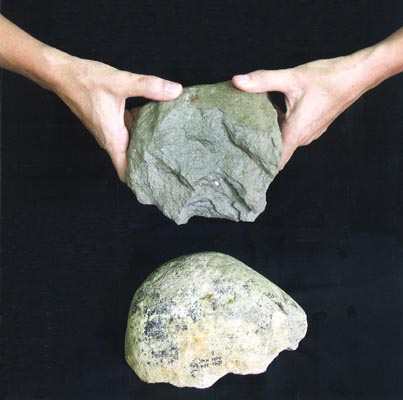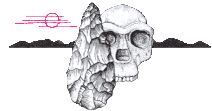The Stone Age Institute Presents
Dr. Sonia Harmand

"The Dawn of Technology:
3.3-million-year-old Stone Tools
from Lake Turkana, Kenya"
Thursday, October 8, 2015 at 4:00 pm
Psychology Building, Room 100
Indiana University Campus
Bloomington, Indiana
This is a free public event. All are welcome.

Stone core and anvil found at the Lomekwi 3 site, Kenya.
Image is used with permission and is courtesy of Sonia Harmand.
All copyrights reserved.
Dr. Sonia Harmand is Associate Professor at Stony Brook University, co-Director of the West Turkana Archaeological Project, and worked as a Research Scientist at the Centre National de la Recherche Scientifique (CNRS) in France from 2009 to 2012. Dr. Harmand is an expert in Early Stone Age archaeology. Her research program revolves around the central theme of how, when, and why did stone tool manufacture and use originate among hominins. Since 1998, she has focused her research on reconstructing the genesis of hominin technology, a period for which the archaeological record is meager. In addition, Prof. Harmand is exploring with her team the biomechanics involved in the making and possible use of stone tools.
In 2011, during a field expedition in Kenya, Dr. Harmand and a team of scientists discovered 3.3-million-year-old stone artifacts at Lomekwi site in the Turkana Basin of Northern Kenya, making it the earliest archaeological site known. Until these findings, the oldest stone tools were dated to 2.6 million years old. The earliest evidence of the genus Homo appears at 2.8 million years ago, which indicates that these Turkana Basin stone tools may have been made by other forms of early hominin (the group consisting of humans and their close extinct relatives). She and colleagues have published a paper about the 3.3-million-year-old stone tools in Nature.

